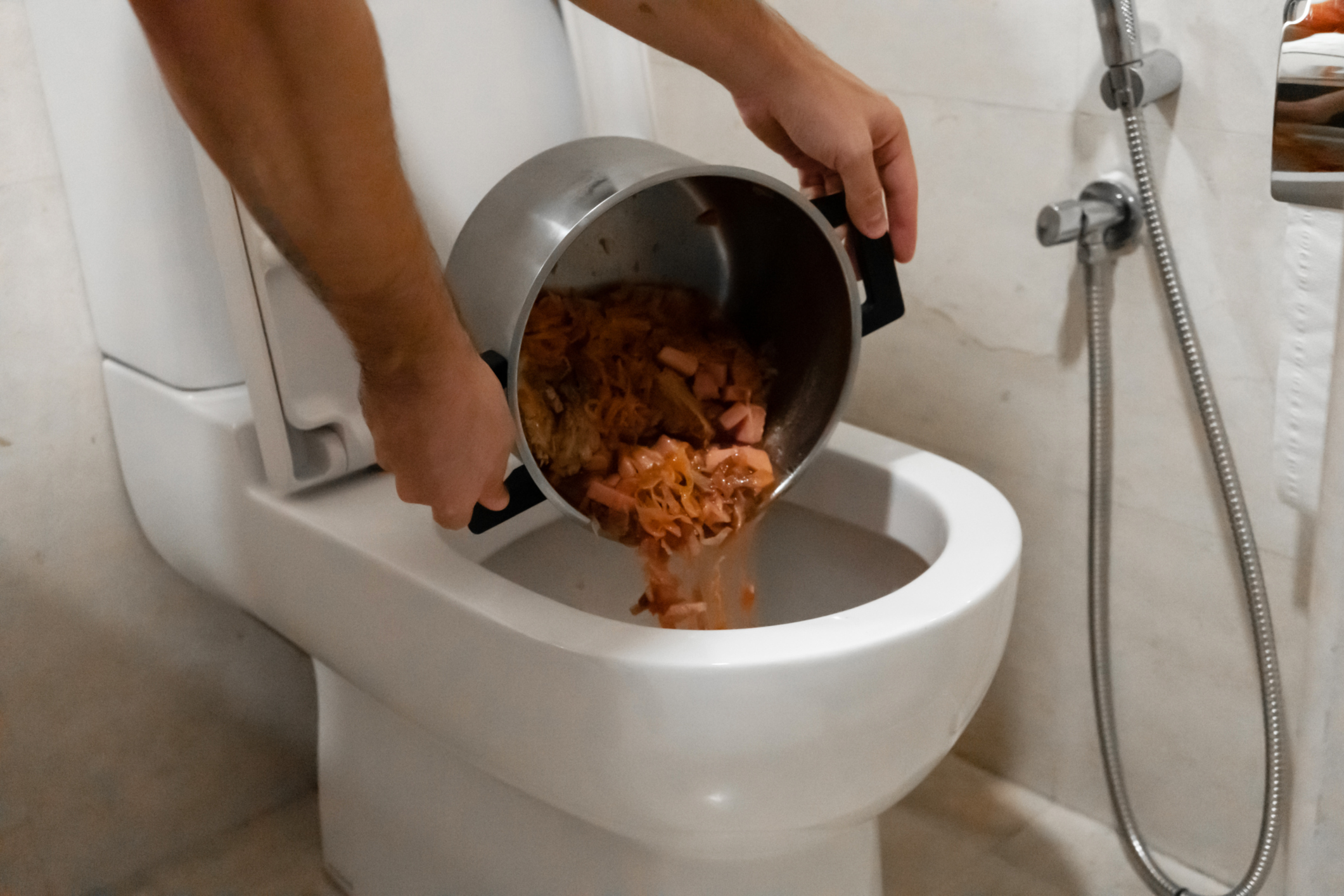Can One to Flush Food Down the Toilet?
Can One to Flush Food Down the Toilet?
Blog Article
They are making a number of good observations about What Can Happen If You Flush Food Down the Toilet? in general in this great article below.

Intro
Many people are typically faced with the problem of what to do with food waste, specifically when it comes to leftovers or scraps. One common inquiry that occurs is whether it's fine to flush food down the toilet. In this post, we'll delve into the reasons people may take into consideration flushing food, the effects of doing so, and different methods for correct disposal.
Reasons that people may consider flushing food
Lack of understanding
Some people may not recognize the potential harm caused by flushing food down the bathroom. They might mistakenly believe that it's a safe practice.
Comfort
Purging food down the commode might look like a fast and easy option to dealing with unwanted scraps, particularly when there's no nearby trash bin offered.
Negligence
In some cases, individuals may simply select to flush food out of large laziness, without thinking about the consequences of their activities.
Consequences of flushing food down the commode
Environmental impact
Food waste that winds up in rivers can contribute to air pollution and injury water ecological communities. In addition, the water made use of to purge food can stress water sources.
Pipes issues
Flushing food can cause blocked pipelines and drains pipes, causing costly pipes fixings and hassles.
Types of food that need to not be purged
Fibrous foods
Foods with fibrous structures such as celery or corn husks can get tangled in pipelines and create blockages.
Starchy foods
Starchy foods like pasta and rice can soak up water and swell, bring about blockages in pipes.
Oils and fats
Greasy foods like bacon or food preparation oils should never be flushed down the commode as they can strengthen and create blockages.
Correct disposal techniques for food waste
Utilizing a garbage disposal
For homes outfitted with waste disposal unit, food scraps can be ground up and purged with the plumbing system. Nonetheless, not all foods are suitable for disposal in this fashion.
Recycling
Certain food product packaging products can be reused, lowering waste and minimizing environmental influence.
Composting
Composting is an environmentally friendly method to dispose of food waste. Organic materials can be composted and made use of to enrich dirt for horticulture.
The significance of proper waste management
Lowering ecological injury
Appropriate waste monitoring methods, such as composting and recycling, help minimize air pollution and maintain natural deposits for future generations.
Safeguarding pipes systems
By preventing the technique of flushing food down the commode, property owners can stop pricey plumbing repair services and preserve the stability of their plumbing systems.
Conclusion
In conclusion, while it may be appealing to purge food down the bathroom for convenience, it is necessary to comprehend the prospective effects of this activity. By embracing proper waste monitoring techniques and getting rid of food waste responsibly, individuals can add to healthier pipes systems and a cleaner setting for all.
FLUSH FOOD DOWN THE TOILET?
FLUSHING FOOD CAN CAUSE BLOCKED DRAINS IN YOUR HOME
All of the plumbing fixtures in your home are connected to the same sewer pipe outside of your home. This outdoor sewer pipe is responsible for transporting all the wastewater from your home to the Council sewer mains. Even small pieces of food that go down the kitchen sink can cause problems for your sewer. It should therefore be obvious that flushing larger bits of food, such as meat, risks a clog in either the toilet itself or the sewer pipes. Flushing greasy food is even more problematic because oil coagulates when it cools, coating the interior lining of your pipes.
THE TOILET IS NOT A BIN
Food isn’t the only thing that people shouldn’t be flushing down the toilet. People use the toilet to dispose of all kinds of things such as tampons, makeup wipes, dental floss, kitty litter and even underwear. Water goes to great lengths to educate residents about the high costs and stress placed on wastewater treatment systems simply from people flushing the wrong stuff down the toilet. It costs taxpayers millions of dollars each year, and homeowners thousands in blocked drain repairs.
FLUSHING FOOD IS A WASTE OF WATER
Flushing food is a waste of our most precious resource - water. In June this year Level 1 water restrictions were introduced to protect water supply from drought conditions. Much of New South Wales continues to be affected by prolonged drought with recent figures revealing up to 97 per cent of the state remains in drought. Depending on whether you have a single or dual flush toilet, every single flush uses between five and 11 litres of water. In the current climate this is a huge amount of water to be wasting on flushing food that should be placed in the bin (or better yet, the compost).
https://www.jabplumbingsolutions.com.au/blog/can-you-flush-food-down-the-toilet

Do you really like more info about What Can Happen If You Flush Food Down the Toilet?? Make feedback further down. We'd be pleased to know your ideas about this article. We are looking forward that you come back again soon. In case you enjoyed reading our page kindly be sure to pass it around. Thanks a lot for being here. Revisit us soon.
Schedule Now Report this page